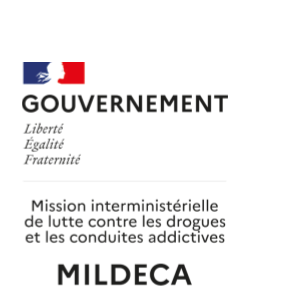ADdictions et Dépression dans la cohorte ConsTances – ADDICT
Résumé de soumission
Background
Substance use disorders and major depression are among the leading causes of disability worldwide and often co-occur. Although this comorbidity is associated with poorer outcomes for both conditions, its underlying mechanisms are poorly understood and may vary by type of substance used and differ in effects across subgroups of the population (e.g., women, young adults, older adults and social deprivation). Data are especially lacking for cannabis use.
Objectives
The present project will take advantage of the French national CONSTANCES Cohort Study, in which more than 147 000 participants were already included in July 2017. Its specific aims are:
1. To provide descriptive information about the relationships between alcohol, tobacco, cannabis and benzodiazepines use and depressive states in France according to gender, age and SES.
2. To examine simultaneously whether sex, age and SES disparities in the prevalence or effects of alcohol, tobacco, cannabis and benzodiazepines use contribute respectively to sex, age and SES differences in the prevalence of depressive states.
3. To determine the specificity of each substance on depressive states (i.e., how much of the effect is due to the shared effect of substance use versus how much is due to specific substance).
4. To disentangle the causal relationships between alcohol, tobacco cannabis and benzodiazepines use and depressive states.
Methods
Depressive symptoms were measured by the CESD (Center for Epidemiological Studies – Depression) scale and will be combined with data regarding hospitalization for depression and antidepressant drugs use to increase the specificity of the identification of depressive states. Alcohol consumption was assessed as continuous variable and with the Alcohol Use Disorders Identification Test (AUDIT). Detailed information on lifetime and current use of tobacco and cannabis were self-reported. Benzodiazepines reimbursement in the SNIIRAM database will be used as a proxy for benzodiazepines consumption. General Linear Models (GLM) will be used to examine sex, age and socioeconomic status (SES) differences in the prevalence of each substance use and the conditional risk of depressive state by substance type. We will use a moderated mediation path analysis to simultaneously examine whether sex differences in the prevalence or effect of the different types of substance contribute to sex differences in the prevalence of depressive state and in depressive symptoms severity. This approach will also be applied to examine age and SES differences. Since substance use disorders often co-occur, we will combine confirmatory factor analysis (CFA) or exploratory factor analysis with structural equation modeling (SEM) to determine the extent to which the association between substance use and depressive state (or depressive symptoms severity) is specific to each substance and the extent to which it is due to co-occurring use of more than one substance. The hypothesis that the predominant direction of the bidirectional association is from substance use to depressive states will be tested prospectively with both instrumental variable and propensity score methods.
Perspectives
A better understanding of the association between depressive states and each substance use disorder is crucial for developing relevant and effective preventive interventions by targeting causally involved pathways. Examining whether this comorbidity is more frequent / more detrimental in particular subgroups and understanding the reasons for this hypothesized heightened vulnerability in specific subgroups, especially following age, gender and SES, will allow personalized preventive interventions.
Equipes du projet
Coordonnateur :
LEMOGNE Cédric
N° ORCID : 0000-0002-3487-4721
Structure administrative de rattachement : Hôpital Européen Georges Pompidou
Laboratoire ou équipe : Service de Psychiatrie de l’adulte et du sujet âgé
Autres équipes participantes :
Responsable de l'équipe 2 : ZINS Marie
Inserm UMS 011 « Cohortes épidémiologiques en population »
Dites-le nous !













